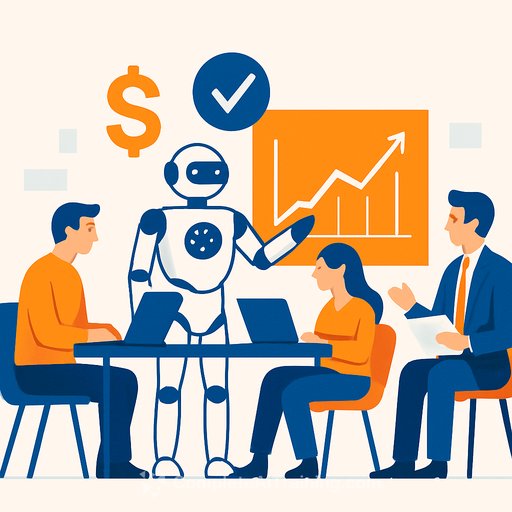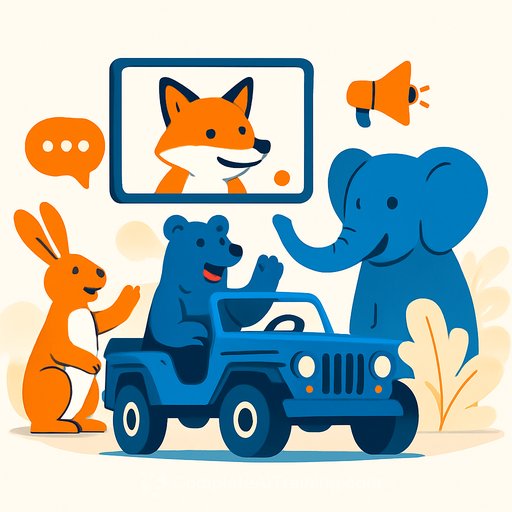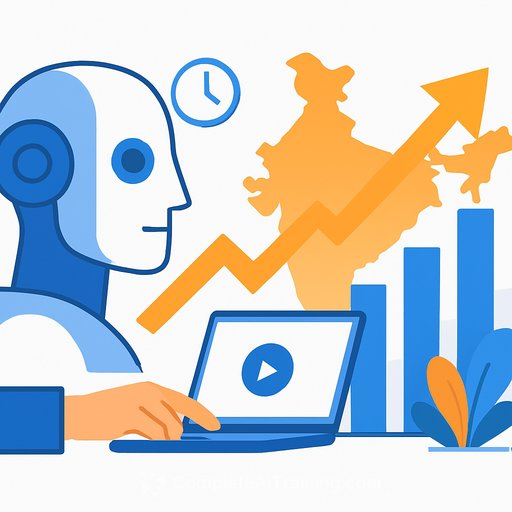Benchmarking AI in Agencies: What To Measure, How To Price, What To Fix
A global procurement team recently asked how we benchmark the performance of AI inside agencies and translate that into fees. We're hearing the same question from marketers and agency leaders everywhere.
The promise of a fully autonomous, end-to-end AI agency is loud right now. Announcements hint at a seamless stack where generative tools create, models target, and automation delivers. It sounds efficient. It isn't here yet.
The tech pieces exist. The integration, accountability, and human judgment don't. That's why the real work is benchmarking what AI actually improves, proving it with data, and pricing it in a way that rewards outcomes-without eroding brand safety or creative quality.
The "autonomous agency" is a story, not a system
End-to-end autonomy is a compelling fiction. You can stitch tools together, but the seams show. The gaps are human, ethical, and strategic.
Until decisions are explainable, bias is controlled, and brand risk is managed, a machine-only agency is theory. The question isn't "if." It's "what must be true before it works?"
The black box problem: ethics and explainability
Advanced models make choices you can't easily explain. "Why did we target this segment?" If the answer is "because the model said so," you have an accountability problem. Clients won't buy it. Regulators won't either.
Bias is the second hit. Train on skewed data and you propagate skewed outcomes-like job ads skewing to men for higher-paid roles. Without human oversight, you invite reputational, legal, and societal harm. A practical start: align governance to the NIST AI Risk Management Framework and document how each high-impact decision is made.
Generative AI is prolific, not creative
Generative systems are sophisticated pattern matchers. They remix what already exists. Useful for drafts and options. Weak at brand nuance, cultural context, and tension-the raw material of memorable work.
Great campaigns come from human insight, risk, and taste. AI can assist the craft. It doesn't replace the creator.
Bottlenecks are human, not process
Automation shortens approvals and checks compliance. Helpful. But only people can say, "The brief is wrong," or "This budget can't deliver that outcome."
Account leads translate data into decisions the C-suite will act on. Strategists spot opportunities models miss. Keep the human-in-the-loop where judgment shapes impact.
A practical benchmarking framework
Here's the approach we use to benchmark AI performance inside agencies and connect it to fees. It's simple, auditable, and repeatable.
What to measure
- Throughput and cycle time - Time to first concept, time to final, assets produced per week, revision loops per deliverable.
- Quality and brand safety - Brand voice consistency, legal/compliance error rate, factual error rate, hallucination rate, copyright flags.
- Effectiveness - Lift vs. baseline in CPA/CPL/ROAS, CTR, view-through, conversion quality. Compare matched cohorts and time windows.
- Targeting accuracy - Audience match rate, waste reduction, incremental reach, frequency discipline, model drift over time.
- Explainability and bias - % of key decisions with documented rationale, bias test results by protected attributes, approval overrides.
- Governance - Data lineage, model version control, prompt libraries, approval logs, incident response time.
- Human impact - Hours saved by role, reallocation of time to strategy/creative, training completion, tool adoption rate.
- Cost to serve - Model/tool costs, compute usage, reduction in rework, vendor overlap eliminated.
How to run the benchmark
- Inventory - Map use cases (copy, design, media ops, QA, reporting). Note tools, owners, and handoffs.
- Baseline - Capture pre-AI metrics for 4-8 weeks. Lock definitions and data sources.
- Pilot - Select 2-3 high-volume, low-risk use cases. Stand up a control vs. AI-assisted split.
- Measure - Track the metrics above. Require human sign-off for quality and brand safety.
- Normalize - Adjust for spend, seasonality, audience, and creative tier. Document assumptions.
- Review - Hold a cross-functional readout. Keep what beats baseline by a statistically meaningful margin. Sunset the rest.
- Codify - Write SOPs, prompt libraries, and QA checklists. Add explainability docs for high-impact decisions. See the ICO's guidance on explaining decisions made with AI.
Normalize for fairness
Don't compare a brand launch to always-on retargeting. Use matched budgets and windows. Hold out a control. Attribute lift conservatively. The goal is repeatable gains, not one-off spikes.
Turning benchmarks into fees
AI should change what you pay for and how you share value. Pay less for brute-force production. Pay more for strategic impact. Reward provable lift.
- Deliverable pricing with effort bands - Price by output with three bands: manual, AI-assisted, AI-accelerated. Band selection requires a quality and brand-safety pass.
- Performance-linked fees - Base retainer plus bonus for pre-agreed lift (e.g., CPA, ROAS, conversion quality). Set floors for brand safety and compliance; miss a floor, lose the bonus.
- Subscription + SLA - Fixed monthly fee for a defined throughput (e.g., X assets/week, Y reports). Overages at a discounted unit rate.
- Transparent tool costs - Pass through model/tool spend at cost. Margin comes from expertise, not markups on software.
- Governance and training line item - Fund bias testing, explainability, and staff training. These protect the brand and speed scale-up.
Use the automation dividend to reduce low-value hours and reallocate talent to creative, strategy, and client advisory-where fees should hold or increase.
Operating model: augmented, not autonomous
Design teams where machines do volume and people do judgment. Make it explicit.
- Machine roles - First drafts, variant generation, tagging, compliance checks, reporting, and pattern detection.
- Human roles - Brief shaping, concept selection, narrative development, ethical review, client storytelling, and escalation decisions.
- Guardrails - Human approval points at concept, pre-flight, and post-launch. Document overrides and lessons learned.
Maturity stages to benchmark progress
- Level 1: Assisted - Ad hoc tools, basic QA, little governance.
- Level 2: Orchestrated - Standard prompts, SOPs, dashboards, human approvals.
- Level 3: Optimized - Continuous testing, bias checks, cost-to-serve tracked, fee model updated.
- Level 4: Adaptive - Integrated explainability, automated guardrails, performance-linked fees at scale.
Guardrails that keep you safe
- Bias testing on sensitive attributes; document mitigation steps.
- Explainability summaries for high-impact decisions and targeting choices.
- Brand voice and legal checklists; mandatory human sign-off.
- Copyright scanning for generated assets; usage logs.
- Data privacy review for prompts and training data; role-based access.
- Incident response plan for model errors and content takedowns.
What marketers should do next
- Audit your current workflow and costs. Pick 2-3 use cases for pilots.
- Set baselines. Run control vs. AI-assisted for 6-8 weeks. Publish the results.
- Update SOWs with effort bands, SLAs, and performance-linked fees.
- Fund governance. Make bias testing and explainability non-negotiable.
- Upskill your team. Build prompt libraries, SOPs, and QA processes that anyone can follow.
- If you need structured upskilling for marketing teams, see this practical path: AI Certification for Marketing Specialists.
The takeaway
AI changes how agencies work, but it doesn't replace what makes them valuable. Benchmark what matters, pay for verified outcomes, and keep humans in charge of judgment and ethics.
The future isn't autonomous. It's augmented-faster operations, smarter decisions, and creative work guided by data and protected by strong governance.
Your membership also unlocks:






